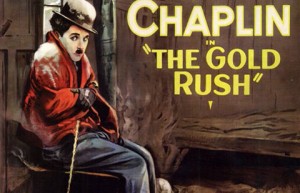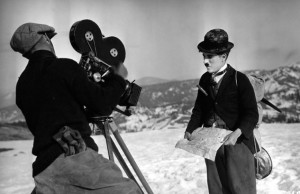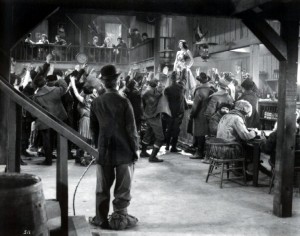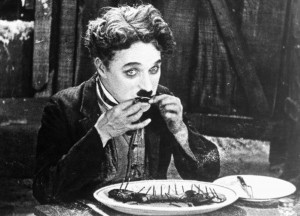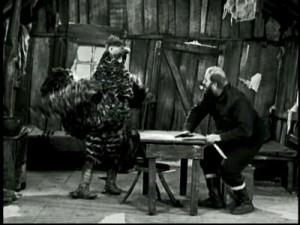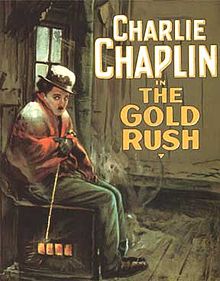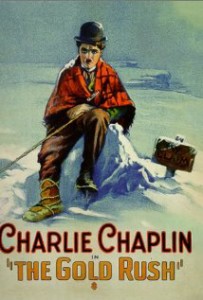The Gold Rush ***** (1925, Charles Chaplin, Mack Swain, Tom Murray) – Classic Movie Review 1052
Producer-writer-director-star Charles Chaplin’s classic 1925 silent comedy is one of his masterpieces. Chaplin said it was the film for which he most wanted to be remembered. It was the highest grossing silent comedy and the fifth highest grossing silent film in cinema history, taking more than $4,250,000 at the box office in 1926.
It showcases some of Chaplin’s finest work as The Lone Prospector (his classic Tramp character in a not very different guise) who goes to the Klondike in search of gold. Bad weather strands him in a remote cabin where gets mixed up with burly prospector Big Jim McKay (Mack Swain) and escaped fugitive Black Larsen (Tom Murray), who fight over the prospector’s claim to a large gold deposit.
The Prospector eventually finds himself in a gold rush town, where he takes a job looking after another prospector’s cabin and falls in love with a lonely saloon girl, the beautiful Georgia (Georgia Hale), whom he mistakenly thinks has fallen in love with him. He soon finds himself waylaid by Big Jim, who has developed amnesia and needs the Prospector to help him find his claim by leading him back to the first cabin. He tries to both get rich and win Georgia’s heart.
Its highlights are among the great comedy movie moments in all cinema, as Chaplin unravels a vintage series of hilarious sequences, which include The Lone Prospector eating a boiled boot for supper, the threatening bear, the teetering Klondike cabin and the bread roll dance performed by the Tramp character. The roll dance is considered one of the most memorable scenes in film history, though Roscoe Arbuckle did a similar routine in his 1917 movie The Rough House.
It’s an all-round success with its brilliantly clever comedy from Chaplin as star performer, inventive film-making by Chaplin the director, and witty writing in Chaplin’s screenplay.
Among all the boisterous humour, Chaplin goes for streaks of Victorian-style poetry, and his taste for out-moded sentimentality, pathos and tenderness may be a turn-off. But otherwise The Gold Rush is still fresh, charming and funny after all these years and hardly feels dated at all and gracefully retains its status as an all-time great movie.
Chaplin released a sound version of the movie in cinemas in 1942, showcasing his own new musical score, in collaboration with musical director Max Terr. Chaplin added sound effects and replaced the silent movie title cards with descriptive voice-over narration. It runs at 72 minutes, tightening the editing which reduced the film’s running time down from the original’s 95 minutes.
The film is also shortened by being run at sound speed of 24 frames per second. Chaplin also changed some plot points, removing the kiss at the end and eliminating a subplot in which the tramp is tricked into believing Georgia is in love with him by Georgia’s paramour, Jack. It was Oscar nominated in 1943 for Best Music Score and Best Sound.
The Special Edition DVD has a restored silent version of the film and the 1942 sound version.
The roll dance was replicated by Robert Downey Jr as Chaplin in Richard Attenborough’s 1992 Chaplin, which also briefly depicts the production of the film.
http://derekwinnert.com/city-lights-1931-charles-chaplin-classic-film-review-1042/
http://derekwinnert.com/the-great-dictator-1940-charles-chaplin-classic-film-review-1044/
© Derek Winnert 2014 Classic Movie Review 1052
Check out more reviews on http://derekwinnert.com

